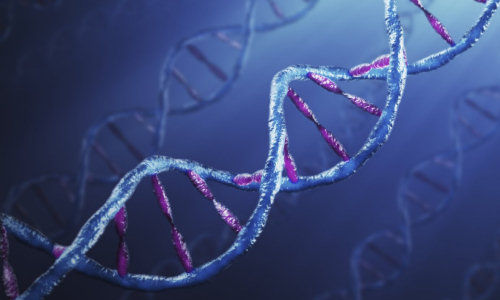Researchers have created a new type of molecular motor made of DNA and demonstrated its potential by using it to transport a nanoparticle along the length of a carbon nanotube.
The design was inspired by natural biological motors that have evolved to perform specific tasks critical to the function of cells, said Jong Hyun Choi, a Purdue University assistant professor of mechanical engineering.
Whereas biological motors are made of protein, researchers are trying to create synthetic motors based on DNA, the genetic materials in cells that consist of a sequence of four chemical bases: adenine, guanine, cytosine and thymine. The walking mechanism of the synthetic motors is far slower than the mobility of natural motors. However, the natural motors cannot be controlled, and they don’t function outside their natural environment, whereas DNA-based motors are more stable and might be switched on and off, Choi said.
“We are in the very early stages of developing these kinds of synthetic molecular motors,” he said.
New findings were detailed in a research paper published this month in the journal Nature Nanotechnology.
In coming decades, such molecular motors might find uses in drug delivery, manufacturing and chemical processing.
The new motor has a core and two arms made of DNA, one above and one below the core. As it moves along a carbon-nanotube track it continuously harvests energy from strands of RNA, molecules vital to a variety of roles in living cells and viruses.
The Nature Nanotechnology paper was authored by graduate students Tae-Gon Cha, Jing Pan and Haorong Chen; former undergraduate student Janette Salgado; graduate student Xiang Li; Chengde Mao, a professor of chemistry; and Choi.
“Our motors extract chemical energy from RNA molecules decorated on the nanotubes and use that energy to fuel autonomous walking along the carbon nanotube track,” Choi said.
The core is made of an enzyme that cleaves off part of a strand of RNA. After cleavage, the upper DNA arm moves forward, binding with the next strand of RNA, and then the rest of the DNA follows. The process repeats until reaching the end of the nanotube track.
Researchers used the motor to move nanoparticles of cadmium disulfide along the length of a nanotube. The nanoparticle is about 4 nanometers in diameter.
The researchers combined two fluorescent imaging systems to document the motor’s movement, one in the visible spectrum and the other in the near-infrared range. The nanoparticle is fluorescent in visible light and the nanotubes are fluorescent in the near-infrared.
The motor took about 20 hours to reach the end of the nanotube, which was several microns long, but the process might be sped up by changing temperature and pH, a measure of acidity.
Story Source:
The above story is based on materials provided by Purdue University, Emil Venere.





